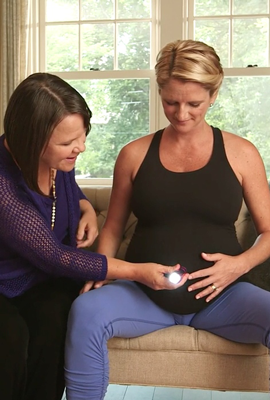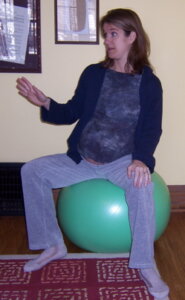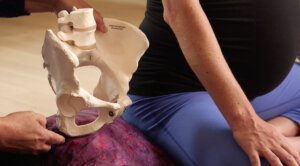Which side should I sleep on?
Going to sleep and/or waking up on your left side seems to protect against unexpected stillbirths, as discovered in a New Zealand study. You obviously have little control over which side you wake up on, but you can learn to go to sleep on your left side!
If your care provider asks you to avoid a particular position, be sure to ask them why. It may be that monitoring of the baby’s heartbeat or your blood pressure shows that a particular position is not good for you at that time. This is always great information to have.
Changing positions may be good for the baby in general. Getting up to go to the bathroom one or more times a night seems to be protective of the baby’s wellbeing as well, as noticed by the same New Zealand researchers.
What most studies agree on is the many disadvantages of sleeping on one’s back. The weight of the womb in mid to late pregnancy can reduce blood flow that is now known to adversely affect the baby’s health.
Rest SmartSM positions support the balance you have regained with daily walking, stretches, and with professional bodywork. What positions to avoid resting in

There are times in pregnancy and labor when it is perfectly OK to lie on your back. During an exam, rolling over, doing exercises and getting body work, for example. But when you are resting, it’s better not to be on your back for the purposes of fetal positioning. You may feel comfortable on your back in the first half of pregnancy.
Towards the middle or end of pregnancy, your blood circulation will be better if you lay on your side than on your back.
You can lay on your left or right as comfort directs you. Fetal positioning may be a concern of yours, however. For instance, you had a posterior labor previously or a cesarean for a long or stalling labor. Then, your resting position may matter as early as the end of the first trimester!
You can also lie on your right side. The directions to lie on your left side are not meant to be a prohibition against laying on your right side. You can favor your left if your care providers suggest you lay on your left. But once in a while, you need to roll over just to give your left shoulder some circulation! Somewhere, there is a woman who must lay in one particular position and will have to ignore this advice in preference to her caregiver’s advice. I acknowledge that and hope you do, too.




 Sit on a Swedish chair or
Sit on a Swedish chair or  Sitting on the toilet is a great time to work on your posture. Use a sturdy U-shaped stool around your toilet or buy a Squatty Potty® or a similar product. You could even import the type of toilet used in Japan, France, and other places where you put one foot on either side of a plumbed, porcelain trough.
Sitting on the toilet is a great time to work on your posture. Use a sturdy U-shaped stool around your toilet or buy a Squatty Potty® or a similar product. You could even import the type of toilet used in Japan, France, and other places where you put one foot on either side of a plumbed, porcelain trough.